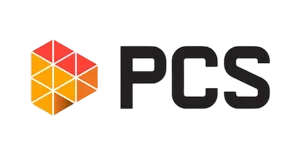Technology continues to play a pivotal role in shaping the learning experience. This increased reliance on digital tools and systems has also brought about a surge in exposure to cyber threats, leaving teachers and educational institutions vulnerable.
“The education sector experienced a 44% increase in cyberattacks when compared to 2021, with an average of 2297 attacks against organizations every week” (Check Point’s 2022 Mid-Year Report).
Furthermore, a report from Security Scorecard included Education as one of the worst-performing sectors when it comes to items like patching cadence, user cybersecurity training, network security, and application security.
What reports like these show is that more can and should be done to help keep educators and schools safe. With schools now back in session, it’s the perfect time to discuss the importance of cybersecurity for teachers, explore the realm of cybersecurity in education, and shed light on the specific concerns of e-learning.
Why is Cybersecurity in Education Important?
In 2022, there were 65 individual ransomware attacks on schools and colleges in which hackers demanded up to $1.6 million across just three attacks. Ransomware attacks on US schools and colleges cost $9.45bn in 2022 - Comparitech
In 2023, over 120 schools have so far fallen victim to ransomware attacks alone. Some of these hacks resulted in thousands of student and staff records being leaked to the dark web. These numbers showcase the urgency of bolstering cybersecurity measures and user training.
Hackers know that schools often grapple with limited funding and IT staffing resources making them prime targets due to unpatched system exploits and educators who, ironically, have not been trained to identify online cybersecurity threats correctly.
How Can Cybersecurity in Education be Improved?
Working to spark the love of learning in students, educators are rarely technology experts. Furthermore, they shouldn’t be responsible for maintaining IT security nor responding to technical glitches.
Due to school funding issues, maintaining a full complement of in-house IT staff is a luxury many educational institutions can't afford.
So, what can be done?
Many schools and universities outsource some or all of their IT services and security to a trusted Managed Service Provider (MSP). Through this partnership, educators remained focused on student learning while schools rely on the IT experience and support of a large team of technicians at a fraction of what it takes to maintain an internal IT staff.
This team of technicians are responsible for crucial tasks like:
- Proactively maintaining network security by applying the latest patches
- Managing lifecycles of technology used by educators and students
- Implementing the cybersecurity tools and training opportunities
- Managing system backups
- Providing partner resources for incident response planning which is often a requirement for cyber insurance policies
PCS is a leading customer-first MSP that many schools and universities rely upon for IT services and helpdesk support. Our technical support is available 24/7, and our team of over 200 technicians ensures that there is never a technical knowledge gap or absences due to vacation or sick days. With PCS as a partner, schools and educators can focus on safeguarding valuable educational materials and promoting a seamless and secure learning experience.
With the start of this new school year, PCS offers a lifeline for educational institutions seeking to navigate this complex environment while focusing on what truly matters: nurturing young minds.
Read a story shared by an educator at a New Jersey school district that was facing similar issues with IT security and how PCS helped their staff and their budget.

